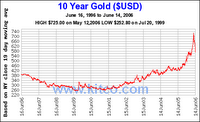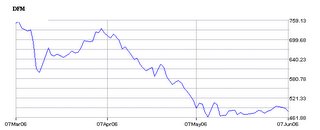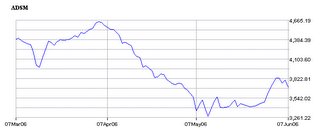Does PE only mean Per Share Price/ Earning?
What does PE say- Only price paid for earning on a per share basis? Or additional important information for which it is regarded as the de facto investment decision making indicator.
Let’s get back to basics. If we value a share assuming:
Next year dividend as D1, perpetual growth rate of g and cost of capital based on desired capital structure of k. Then current stock price can be calculated as:
Po= D1/ (k-g)
Dividing both sides by estimated Earning Per Share for the next year (E1)
Po/E1= D1/E1/ (k-g)
Remember, Po/E1 is a typical forward PE ratio and Dividend Payout = (D/E)
Forward P/E = Desired Dividend Payout Ratio/ (k-g)
Also, Growth Rate (g) = Retention Rate (rr) * ROE
And, Retention Rate (rr) = 1- Dividend Payout Rate
P/E= Dividend Payout/ [k-(rr * ROE)]
Also, k= {[(I) * (1-t)] * D/(D+E)} + [ke * E/(D+E)], where I= Interest, t= Tax Rate, D= Total Debt, E= Net Worth and ke= Cost of Equity
P/E= Dividend Payout/ [[{I * (1-t) * D/ (D+E)} + {ke * E/(D+E)}] – (rr * ROE)]
(Note: Put special attention on the brackets to avoid any confusion)
Further ROE can be break out into (Dupont model) Post Tax Earning/ Sales (Profitability measure) * Sales/ Assets (Asset utilization measure) * Assets/ Net Worth (Leverage measure)
Hence PE of a stock is affected by the Dividend decision, Financing and Capital Structure decision including cost of equity, Tax Rate consideration; and capital efficiency & profitability of the business. The list might not be exhaustive.
Thus it becomes all important for a finance manager to consider the following while making any financial information to tweak the financial model of the firm impacting the PE ratio.
Higher the dividend pay out ratio will increase the PE but at the same time it lowers the retention ratio as rr=(1-Payout) ,which in turn lowers the growth rate as g=rr* ROE, and thus lowers the PE ratio.
Higher tax rate lowers the cost of capital so increases the PE ratio but at the same time it reduces the ROE according to Dupont model by reducing Earning/ Sales, thus lowering the PE ratio.
Higher profitability, better asset utilization and higher leverage, increase the ROE which increases the growth rate (g) thus increases the PE ratio but at the same time increases the cost of capital too and thus the denominator and decreases the PE ratio.
Capital structure is itself an ocean, so better to be left out from PE discussion. In brief increasing debt level decreases the cost of capital initially but then increases the cost of capital by increasing the default premium on debt and risk premium on equity.
To conclude, PE has what it takes to be a de facto investment decision making ondicator.
Let’s get back to basics. If we value a share assuming:
Next year dividend as D1, perpetual growth rate of g and cost of capital based on desired capital structure of k. Then current stock price can be calculated as:
Po= D1/ (k-g)
Dividing both sides by estimated Earning Per Share for the next year (E1)
Po/E1= D1/E1/ (k-g)
Remember, Po/E1 is a typical forward PE ratio and Dividend Payout = (D/E)
Forward P/E = Desired Dividend Payout Ratio/ (k-g)
Also, Growth Rate (g) = Retention Rate (rr) * ROE
And, Retention Rate (rr) = 1- Dividend Payout Rate
P/E= Dividend Payout/ [k-(rr * ROE)]
Also, k= {[(I) * (1-t)] * D/(D+E)} + [ke * E/(D+E)], where I= Interest, t= Tax Rate, D= Total Debt, E= Net Worth and ke= Cost of Equity
P/E= Dividend Payout/ [[{I * (1-t) * D/ (D+E)} + {ke * E/(D+E)}] – (rr * ROE)]
(Note: Put special attention on the brackets to avoid any confusion)
Further ROE can be break out into (Dupont model) Post Tax Earning/ Sales (Profitability measure) * Sales/ Assets (Asset utilization measure) * Assets/ Net Worth (Leverage measure)
Hence PE of a stock is affected by the Dividend decision, Financing and Capital Structure decision including cost of equity, Tax Rate consideration; and capital efficiency & profitability of the business. The list might not be exhaustive.
Thus it becomes all important for a finance manager to consider the following while making any financial information to tweak the financial model of the firm impacting the PE ratio.
Higher the dividend pay out ratio will increase the PE but at the same time it lowers the retention ratio as rr=(1-Payout) ,which in turn lowers the growth rate as g=rr* ROE, and thus lowers the PE ratio.
Higher tax rate lowers the cost of capital so increases the PE ratio but at the same time it reduces the ROE according to Dupont model by reducing Earning/ Sales, thus lowering the PE ratio.
Higher profitability, better asset utilization and higher leverage, increase the ROE which increases the growth rate (g) thus increases the PE ratio but at the same time increases the cost of capital too and thus the denominator and decreases the PE ratio.
Capital structure is itself an ocean, so better to be left out from PE discussion. In brief increasing debt level decreases the cost of capital initially but then increases the cost of capital by increasing the default premium on debt and risk premium on equity.
To conclude, PE has what it takes to be a de facto investment decision making ondicator.




